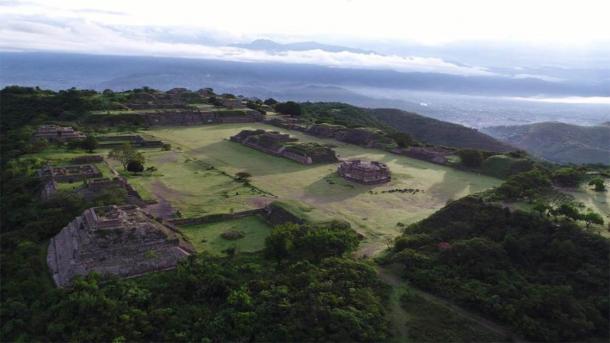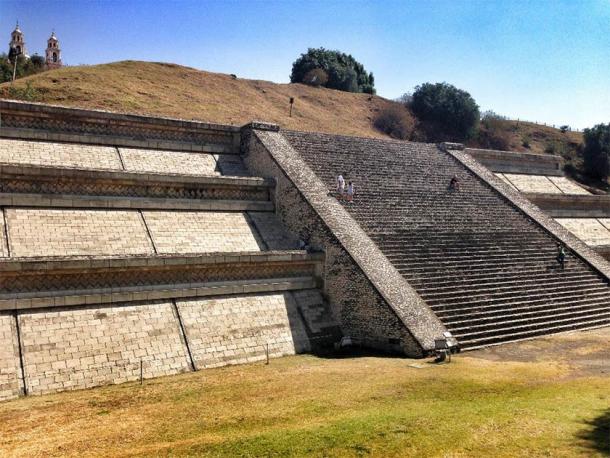Researchers in Mexico have discovered a vast ancient building buried beneath the Main Plaza at the ancient capital of Monte Albán.
Monte Albán is a large pre-Columbian archaeological site located in the Santa Cruz Xoxocotlán Municipality, in the southern Mexican state of Oaxaca, approximately 9 km (5.59 miles) west of Oaxaca City. Representing one of the first developed cities in pre-Hispanic Mexico, this expansive civic-ceremonial center was situated on top of an artificially levelled ridge about 1,940 meters (6,364 ft.) above mean sea level and it rises 400 meters (1,312 ft.) from the valley floor.
Over the years, archaeologists have unearthed hundreds of artificial terraces and dozens of mounds concealing lost architecture that completely covered the entire ridgeline. Now, buried beneath the surface of Monte Albán’s Main Plaza researchers from the University of Oklahoma recently scanned and identified a hitherto unknown ritualistic building.
Reappraising the Monte Albán Plaza
Monte Albán was founded in 500 BC and became a powerful regional capital with many impressive stone buildings featuring a highly developed artistic style and written language system. The Main Plaza at Monte Albán was built, expanded upon, and remodeled over 1,000 years – before the site’s eventual demise around 850 AD. The ancient metropolis was partially excavated in the 1930s and the newly discovered building is similar to the temples discovered back then, which evidence suggested were used ritually, for burning incense , making offerings, and bloodletting.

Monte Albán. ( Dr. Marc Levine )
This new discovery was made by Dr. Marc Levine, assistant curator of archaeology at the Sam Noble Oklahoma Museum of Natural History and assistant professor in the Department of Anthropology, College of Arts and Sciences . Using ground-penetrating radar, electrical resistance, and gradiometry to locate the structure, the researcher told KFOR that everything at this site “is deeply symbolic.” Furthermore, the intrepid explorer added that this new discovery “changes our understanding of the history of the Main Plaza and how it was organized and used.”
A Site Worth its Weight in Gold, Culturally
For almost a century, researchers have studied and investigated many of the stone buildings located around the Main Plaza at Monte Albán, which is deemed so important to modern Mexican culture that the site is featured on the country’s 20 peso note. However, the actual plaza itself has now been analyzed. Professor Levine says that to put the building in context we can look towards the “National Mall in Washington, D.C.” What he means by this is that every monument and every building on that mall has “a significance and was thought over, carefully planned and oriented in a certain way.” And the same goes for Monte Albán, according to the researcher.

Using ground penetrating radar at Monte Albán. ( Dr. Marc Levine )
To lift the lost building from its time capsule the OU team used drones to digitally map the entirety of Monte Albán’s Main Plaza and its surrounding structures and high resolution 3-D images revealed the sizes of all of the buried buildings. Levine estimates his team will spend the next two years analyzing all of their data to complete their study of the plaza. Their ultimate goal is to calculate how much work was involved in creating the site.
Ancient Mexican Vs Egyptian Pyramids
Since the creation of Lidar scanning technology, Mexico’s ancient secrets have been slowly revealed. For example, in July this year, the Guardian announced a mind blowing discovery at Aguada Fénix , near the Guatemalan border in Mexico’s Tabasco state. Scientists using an aerial remote-sensing method “discovered the largest and oldest-known structure built by the ancient Maya civilization – a colossal rectangular elevated platform built between 1000 and 800 BC.” Unlike Mexico’s other pyramids , this one was constructed with clay and earth, but like all of them, it was used for mass public rituals.
This massive ancient structure measures 1,400 meters, almost a mile long, by 400 meters (a quarter-mile) wide, it stood 10 to 15 meters (33 to 50 ft.) high, and it is estimated that its total volume exceeded ancient Egypt’s Great Pyramid of Giza . Egypt’s Great Pyramid of Giza was built 1,500 years earlier and as such it has become the outright winner so far as the most talked about pyramid in the world, but it isn’t the biggest pyramid by a long shot.
The greatest of all Great Pyramids is the Great Pyramid of Cholula , an ancient Aztec temple in Puebla, Mexico, with a base four times larger than Giza’s, and nearly twice the volume. What we can derive from the size and number of the Mexican pyramids is, if the building of pyramids was indeed an act of prestige by powerful, semi-divine rulers, than the regality and control held by kings in Mexico made the Pharaohs of Egypt look like mere landlords.

The Great Pyramid of Cholula. (juancramosgonzalez /Adobe Stock)
Top Image: Monte Albán, Oaxaca, Mexico. Source: WitR /Adobe Stock
By Ashley Cowie
Related posts:
Views: 0
 RSS Feed
RSS Feed

















 November 29th, 2020
November 29th, 2020  Awake Goy
Awake Goy  Posted in
Posted in  Tags:
Tags: 
















